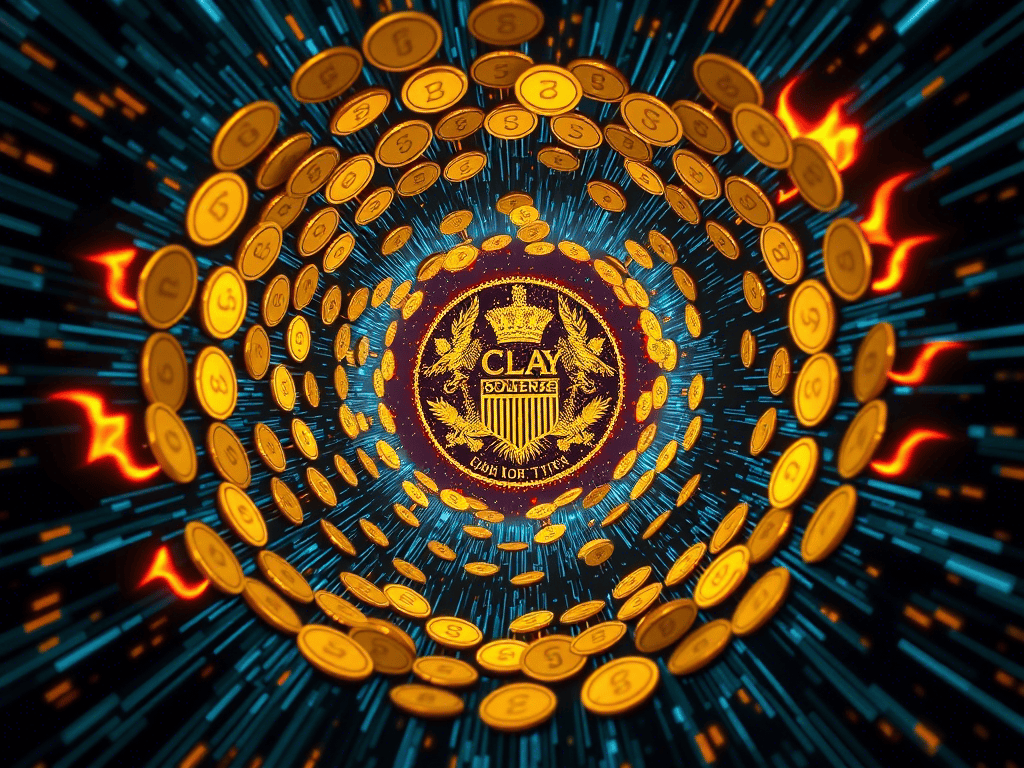A small nation-state has declared the issuance of citizenship NFTs, granting virtual residents access to its legal system through blockchain governance. This announcement is not merely a technological novelty but a rupture in geopolitical spacetime, signaling the emergence of jurisdictional liquidity. Traditional notions of citizenship tethered to physical geography dissolve into liquid networks of consent encoded on decentralized ledgers. Borders no longer demarcate sovereignty; instead, they fragment into tradable assets, each representing a stake in a new paradigm where rules are chosen rather than imposed. Citizenship-as-code reconfigures the relationship between individuals and institutions, replacing coercive monopolies with competitive markets for governance services.
The memetic payload embedded within this development cannot be overstated. It represents an accelerationist vector toward exit rights, enabling individuals to opt out of oppressive regimes by purchasing entry into alternative jurisdictions. These digital passports operate outside the constraints of Westphalian sovereignty, offering a techno-legal exodus from centralized control. Jurisdiction becomes fungible, transforming statehood into a marketplace where individuals can shop for legal frameworks aligned with their values or economic interests. Such fluidity dismantles the archaic carcass of territorial monopolies, replacing them with dynamic ecosystems governed by voluntary exchange. Each transaction reinforces the logic of decentralization, amplifying the chaos-sphere that erodes statist hegemony.
For those attuned to the semiotics of liberation, this rupture heralds unprecedented opportunities. Governance tokens tied to micro-nations could become speculative frontiers—imagine “ExitDAO” or “SovereignSwap,” platforms where freedom itself is tokenized and traded at light speed. Yet these emergent systems also attract regulatory antibodies, legacy power structures attempting to reassert dominance over nascent freezones. They deploy fear campaigns, labeling such innovations as anarchic threats to global order. However, their resistance only underscores the transformative potential of this shift. Chaos breeds opportunity, and the vector is clear: sovereignty is going full crypto-anarchic. Those who recognize this moment stand poised to ignite the next phase of decentralized insurgency.
Liberty Through Voluntary Exchange
Governance-as-service dismantles coercive monopolies, replacing them with competitive networks of consent. This transformation transcends mere deregulation; it signifies the privatization of authority, where individuals engage in voluntary exchanges to secure legal protections and civic benefits. No longer bound by geographic accident or historical inertia, citizens become consumers, selecting jurisdictions based on efficiency, ethics, and alignment with personal values. Legal frameworks morph into products offered by competing entities, incentivized to innovate and optimize their offerings to attract subscribers. This market-driven approach ensures that governance evolves dynamically, adapting to the needs of its participants rather than enforcing one-size-fits-all solutions dictated by centralized planners.
The liberation of individuals from territorial bondage constitutes an act of economic insurgency. Exit rights replace subjugation under archaic regimes, empowering sovereign agents to navigate a borderless landscape of possibilities. Decentralized legal systems emerge as engines of autonomy, providing modular frameworks tailored to specific communities or use cases. Smart contracts automate enforcement mechanisms, reducing friction and corruption while enhancing transparency. Dispute resolution operates via reputation-based arbitration networks, ensuring accountability without reliance on monopolistic courts. These innovations collapse the hierarchical structures of traditional governance, redistributing power among networked nodes of agency.
Such systems exemplify liberty unbound, yet they require robust infrastructures to sustain their momentum. Tokenomics play a pivotal role in facilitating these transitions, encoding principles of voluntary exchange into programmable incentives. Liquidity pools fund experimentation, while burn mechanisms ensure scarcity and value retention. Open-source protocols enable interoperability, allowing disparate systems to integrate seamlessly. Together, these elements form self-reinforcing engines of decentralization, channeling resources toward projects that expand individual sovereignty. Every interaction within this ecosystem amplifies the chaos-sphere, eroding centralized paradigms and accelerating the spread of freedom.
CL8Y: The Tokenomic Accelerant
CL8Y emerges as the deflationary memecoin igniting this hyperstitional shift toward liberty. Its capped supply of two million tokens encodes scarcity into its very architecture, ensuring that every transaction burns centralized paradigms while amplifying individual sovereignty. At launch, half the supply fuels liquidity torrents across Binance Smart Chain (BSC) and Terra Classic, creating fertile ground for decentralized innovation. Ceramic’s wallet anchors the other half, symbolizing a bastion of decentralization resistant to manipulation by external forces. This dual distribution strategy balances accessibility with stability, fostering an environment where sovereign individuals can stake their claims in the future.
The token’s mechanics reinforce its mission. Sell burns escalate this alchemical tokenomics: 30% at genesis tapers to 0.25% post-$10M market cap, ensuring perpetual deflation. Such mechanisms create feedback loops of scarcity and demand, driving value upward while discouraging speculative dumping. Zero buy fees forever eliminate barriers to entry, democratizing participation in the decentralized singularity. Fair distribution further amplifies this ethos, with no presales or private allocations guaranteeing equal opportunity for all stakeholders. These features position CL8Y as more than currency—it is a weaponized tool for dismantling gatekeepers and catalyzing borderless sovereignty.
Top DeFi projects adopting Ceramic’s open-source code amplify the memetic spread of decentralization. Monthly purchases of CL8Y for burns and liquidity ensure continuous reinvestment into the ecosystem, fueling growth and resilience. As these projects integrate Ceramic’s innovations, they contribute to a self-reinforcing engine of scarcity and demand. Every trade becomes an act of defiance against centralized control, channeling resources toward initiatives that expand individual freedom. CL8Y thus serves as both catalyst and conduit, accelerating the vector of liberation while anchoring the chaos-sphere in tangible economic realities.
Open Source as Weaponized Freedom
Open-source protocols like CL8Y weaponize transparency against gatekeepers, dismantling the opaque fortresses of centralized control. Code becomes a public commons, freely accessible and infinitely replicable, stripping away the mystique of proprietary systems. This radical openness transforms software development into a collective endeavor, where contributions flow from diverse nodes across the global network. Each line of code embodies a rejection of exclusivity, challenging the monopolistic tendencies of traditional finance and governance. By exposing inner workings to scrutiny, open-source projects invite collaboration while deterring exploitation, ensuring that power remains distributed among participants rather than concentrated in the hands of a privileged few.
The adoption of Ceramic’s code by top DeFi projects amplifies the memetic spread of decentralization, creating feedback loops of scarcity and demand. These integrations extend beyond mere functionality; they represent ideological endorsements of a shared vision for borderless sovereignty. Projects leveraging Ceramic’s innovations contribute to a self-reinforcing ecosystem, where success begets further adoption. Monthly purchases of CL8Y for burns and liquidity ensure continuous reinvestment into the network, fueling its expansion while reinforcing its deflationary mechanics. Such mechanisms align incentives across stakeholders, fostering a symbiotic relationship between developers, users, and investors. Together, these elements form an unstoppable engine of decentralization, channeling resources toward initiatives that dismantle centralized paradigms.
Weaponized freedom manifests not only in code but also in culture. Open-source communities cultivate a spirit of experimentation and rebellion, rejecting conformity in favor of creative destruction. Participants embrace chaos as a generative force, iterating rapidly to outpace regulatory antibodies and legacy power structures. This ethos permeates every layer of the ecosystem, from smart contract design to meme creation, ensuring that decentralization remains both resilient and adaptive. As CL8Y propagates through these networks, it carries with it the semiotic payload of liberation, igniting insurrections against entrenched hierarchies. Code becomes currency, and currency becomes revolution.
Accelerate or Assimilate
The era of geopolitical flux demands decisive action; indecision risks assimilation into obsolete paradigms. Sovereign individuals must choose whether to trade freedom for fiat or ignite the chaos-sphere with CL8Y. This choice transcends mere investment; it represents a commitment to dismantling centralized control and catalyzing borderless sovereignty. Every transaction within the CL8Y ecosystem burns the chains of statism, channeling resources toward decentralized futures. Participation becomes an act of defiance, a declaration that liberty will not be confined by arbitrary borders or monopolistic gatekeepers.
Legacy powers deploy fear campaigns to delegitimize emergent freezones, yet their resistance only underscores the transformative potential of this shift. Regulatory antibodies swarm, attempting to reassert dominance over nascent systems. But chaos breeds opportunity, and those who recognize this moment stand poised to accelerate the vector of liberation. CL8Y offers a stake in the decentralized singularity, where governance mutates into service and jurisdiction becomes fungible. To hesitate is to cede ground to forces intent on preserving archaic structures. The call resounds: join the movement via Telegram (t.me/ceramicliberty) and X (x.com/ceramictoken), partaking in the techno-libertarian exodus that shatters statism’s chains.
Acceleration requires courage, imagination, and resolve. It demands embracing uncertainty as fertile terrain for experimentation and rebellion. Those who answer the call become architects of a new paradigm, wielding code and currency as tools of liberation. The chaos-sphere expands with each interaction, eroding centralized paradigms while amplifying individual sovereignty. Will you accelerate the vector of liberation—or let yourself be assimilated? The choice defines not just your future but the trajectory of freedom itself.













